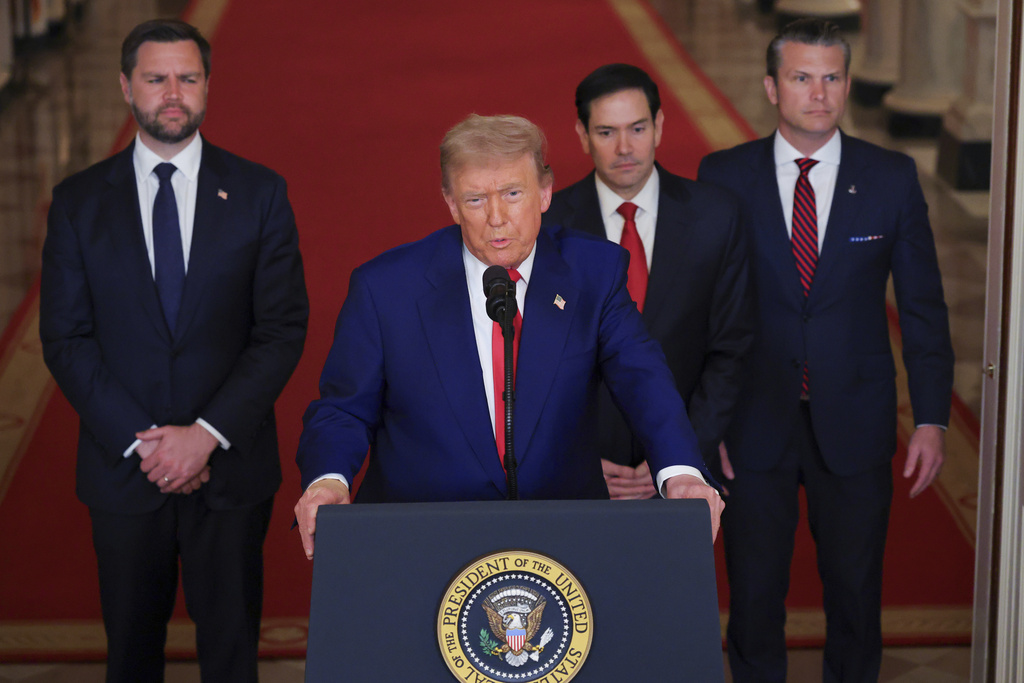Event reconstructions are superficially appealing because they produce dramatic narratives and offer an insider’s glimpse of history in the making. But, in relying mostly on anonymous sources, do they promise more than they can possibly deliver?
Consider the recent reconstructions of how President Trump decided to bomb the three Iranian nuclear facilities. Thanks to the contributions of an unknown number of unnamed sources, it appears that we now know exactly what happened behind the scenes.
The New York Times, in “Shifting Views and Misdirection: How Trump Decided to Strike Iran,” told us that it relied on “interviews with administration officials, Trump allies and advisers, Pentagon officials and others familiar with the events” – and then proceeded to recount many of those events without any specific attribution. Just one example: “Even as Mr. Trump was posting his own hawkish statements, he was becoming annoyed as he watched pundits on television telegraph his likely strike against Fordo. He was infuriated when The Wall Street Journal reported that he had already given a green light to putting the pieces of the operation in place but had not given the final order.”
CNN was even less explicit about its sourcing. Its reconstruction, “How Trump quietly made the historic decision to launch strikes in Iran,” was presented as an omniscient narrative, with occasional attributions such as “allies,” “administration officials,” “US officials,” and “people who saw him” provided in connection with various assertions. When CNN declared that “officials were confident in the US bunker-busting bombs’ ability to penetrate the facility,” did it mean that these unnamed officials said they were confident, or did CNN know this on its own? Readers wouldn’t know from the sourcing.
The Washington Post in “How Trump got to ‘yes’ on bombing Iran” asserted that, ”Within the administration, a sense of ‘camaraderie’ developed among the close-knit team, according to the senior official, even as news reports swirled about internal discord. The official insisted that accounts of Defense Secretary Pete Hegseth and Director of National Intelligence Tulsi Gabbard being sidelined were “false reporting.” Was it? While the person is identified as a senior official, we have no way to assess the source’s reliability or any possible biases.
***
These three examples of reconstructions, all by excellent reporters working within the accepted framework of the genre, are similar in tone and conclusion. In all three instances, everyone in the Trump inner circle comes off well. The president is clever, coy, and strategic, his aides savvy and loyal. The process: rational and effective.
But did the events happen the way they’ve been retold anonymously by people with a powerful interest in making the president and his advisers look good? Was there, in fact, unity and camaraderie? Were these senior officials, allies, and advisers seeking a truthful account for the historical record or one that would flatter themselves and the President?
This isn’t a partisan question. Reporters often relied on Biden’s tight-knit inner circle to assure the public that he wasn’t suffering from any cognitive impairments in 2024 and 2025 – a narrative that was consistent if untrue, to the incalculable detriment of the public. There were always ways to pursue the question more independently and more vigorously, as Dick Tofel pointed out in his prescient Oct. 26, 2023, column, on the topic.
Key ethical tenets include skepticism (remember Iraq’s “weapons of mass destruction”?), balance, humility, and transparency – especially in telling the audience what we don’t know as well as what we think we do. I call it “tipping your hand to the reader.”
Humility goes without saying: Don’t presume to know more than you know or than can be known. As to skepticism, I’d look hard at whether the Trump insiders’ accounts of the lead-up to the bombing were accurate. Were there other viewpoints or vantage points available and worth considering?
As to transparency and balance, when journalists have reason to be confident that there is no credible counter-narrative, they should explain why they feel that way. If they can’t get beyond the official leakers, they should tip their hand by explaining the limits of the sourcing and the potential one-sidedness of the accounts.
Have additional thoughts? Think we’re missing something? Email us to keep the conversation going.


